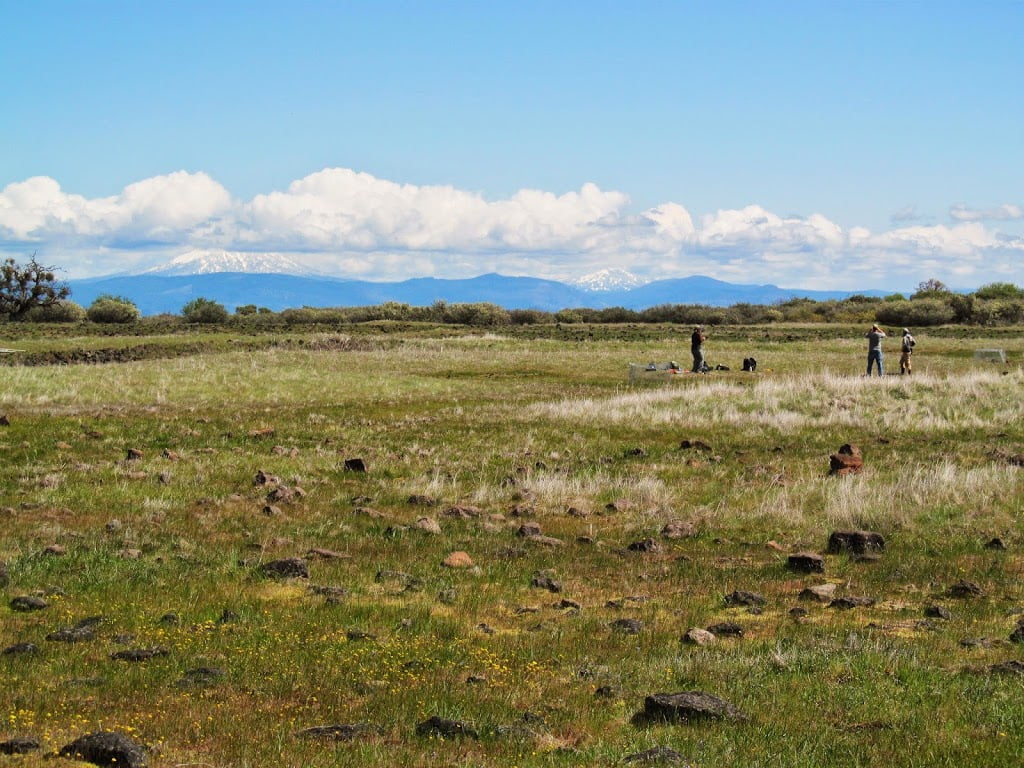
SPRING HAS SPRUNG AT LOWER TABLE ROCKS
 |
| View from Lower Table Rocks, Pictured from left: Erin Gray, Scott Orr and Denise Giles-Johnson Photo credit: Tara Callaway |
It’s that time of year again! Field season has kicked off for the Conservation Research program at the Institute for Applied Ecology (IAE). This year, our season began at Lower Table Rocks located in southern Oregon near Medford. Warm temperatures, bright blue skies and a plethora of wildflowers welcomed us on all three days.
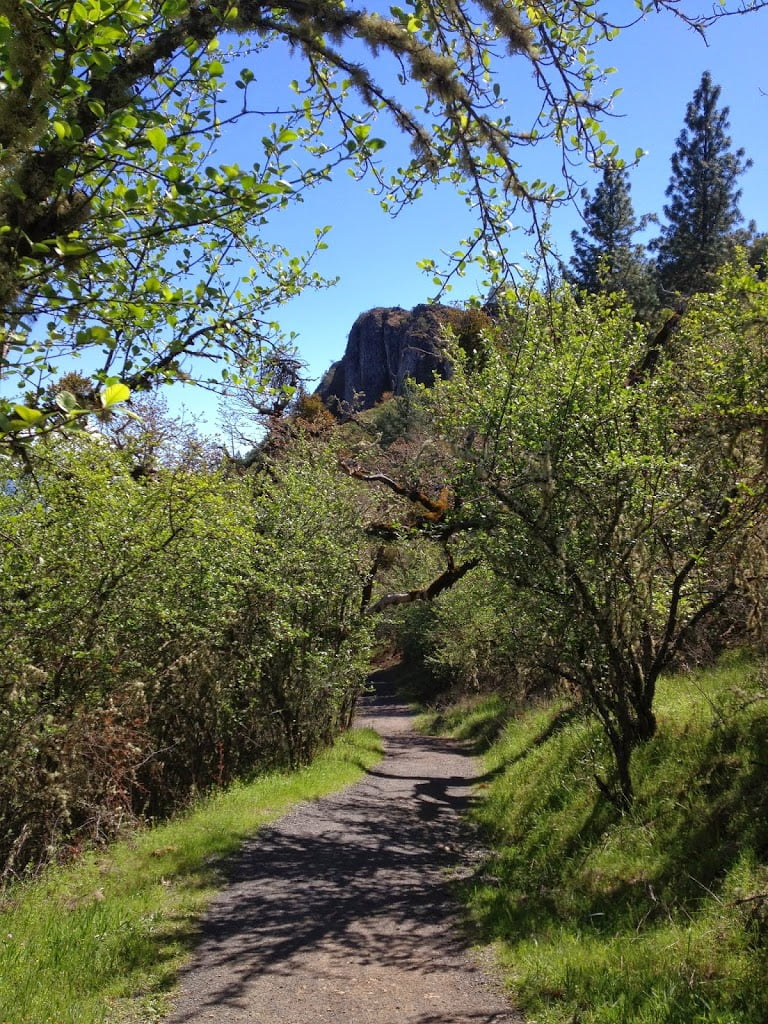 |
| View of Lower Table Rocks from trail Photo credit: Denise Giles-Johnson |
Since 2006, IAE in partnership with the Medford District BLM has been monitoring the population trends and effects of grazing and recreation on the State Threatened, Federal Species of Concern, Limnanthes pumilassp. pumila (dwarf wooly meadowfoam).
 |
| Limnanthes pumila ssp. pumila Photo credit: Erin Gray |
Permanent plots were distributed in high-and low-traffic areas and in caged and non-caged pairs to study the population trend of Limnanthes pumila ssp. pumila and to determine the factor, if any, which may be affecting the population.
 |
| Permanent caged plot Photo credit: Erin Gray |
Recently in 2013, five transects were added to Lower Table Rocks to monitor the effects of an emergency fire retardant drop that occurred in July 2010 on plant communities.
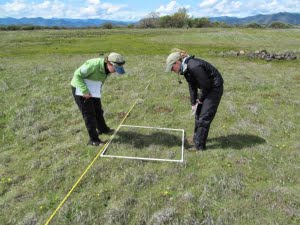 |
| Collecting transect data, Pictured from left: Erin Gray and Tara Callaway Photo credit: Scott Orr |
For a more in-depth description about the Table Rocks monitoring project, please read the July 22nd, 2013 post “Conservation Research in Areas of Critical Environmental Concern” or the 2013 report https://appliedeco.org/reports/Table%20Rocks%20Report_2013_final.pdf
Additionally, a short wildflower list has been compiled (attached below) and details the species seen on and around Lower Table Rocks (3/31/14-4/2/14).
Native Plant Species
Amsinckia menziesii var. intermedia (common fiddleneck)
 |
| Collinsia grandiflora |
Berberis aquifolium (Oregon grape)
Callitriche marginata (winged water starwort)
Callitriche trochlearis (water starwort)
Calochortus tolmiei(Oregon mariposa lily)
Camassia leichtlinii (great camas)
Camassia quamash (common camas)
Cardamine nuttallii (Nuttall’s toothwort)
Collinsia grandiflora (Chinese pagoda)
Collinsia sparsiflora(spinster’s blue-eyed Mary)
Crepis occidentalis (Western hawksbeard)
Crepis pulchra (small-flowered hawksbeard)
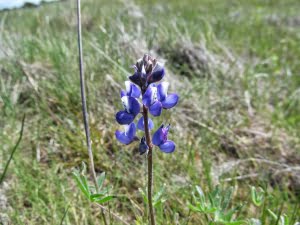 |
| Lupinus bicolor |
Cynoglossum grande (Hound’s tongue)
Daucus carota (wild carrot)
Daucus pusillus (American wild carrot)
Delphinium nuttallianum (larkspur)
Dicentra formosa (bleeding heart)
Erythronium hendersonii (fawn lily)
Fritillaria recurva (scarlet fritillary)
Geranium molle (dove-foot geranium)
Idahoa scapigera (speckled pod)
Lasthenia californica (California goldfields)
Limnanthes pumilassp. pumila (dwarf wooly meadowfoam)
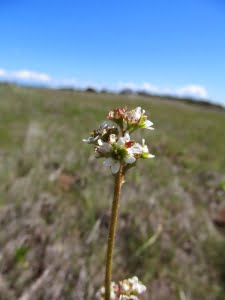 |
| Saxifraga integrifolia |
Lomatium californicum (California lomatium)
Lomatium dissectum (lace-leafed lomatium)
Lomatium utriculatum (desert parsley)
Lupinus bicolor(dwarf lupine)
Myosurus minimus (mouse-tail)
Osmorhiza berteroi (sweet cicely)
Osmorhiza occidentalis (mountain sweet cicely)
Plabiobothrys spp. (popcorn flower species)
Plectritis congesta (sea blush)
Saxifraga integrifolia (wholeleaf saxifrage)
Sisyrinchium bellum(blue-eyed grass)
Sisyrinchium douglasii (grass widow)
Thysanocarpus curvipes (lacepod)
Thysanocarpus radians (large fringepod)
Trifolium depauperatum (cow’s udders)
Zigadenus venenosus(death camas)
Exotic Plant Species
Geranium molle (dove-foot geranium)
Hypochaeris glabra (smooth cat’s ear)
Invasive grasses are increasingly becoming a huge problem at Table Rocks. Here’s a list of the most alarming species:
Poa bulbosa (Bulbous bluegrass)
Schedonorus phoenix (Tall fescue)
Taeniatherum caput-medusae (Medusahead)
*Native and exotic species were classified according to the Flowers of Table Rocks published in 2007 written by Susan K. MacKinnon.
